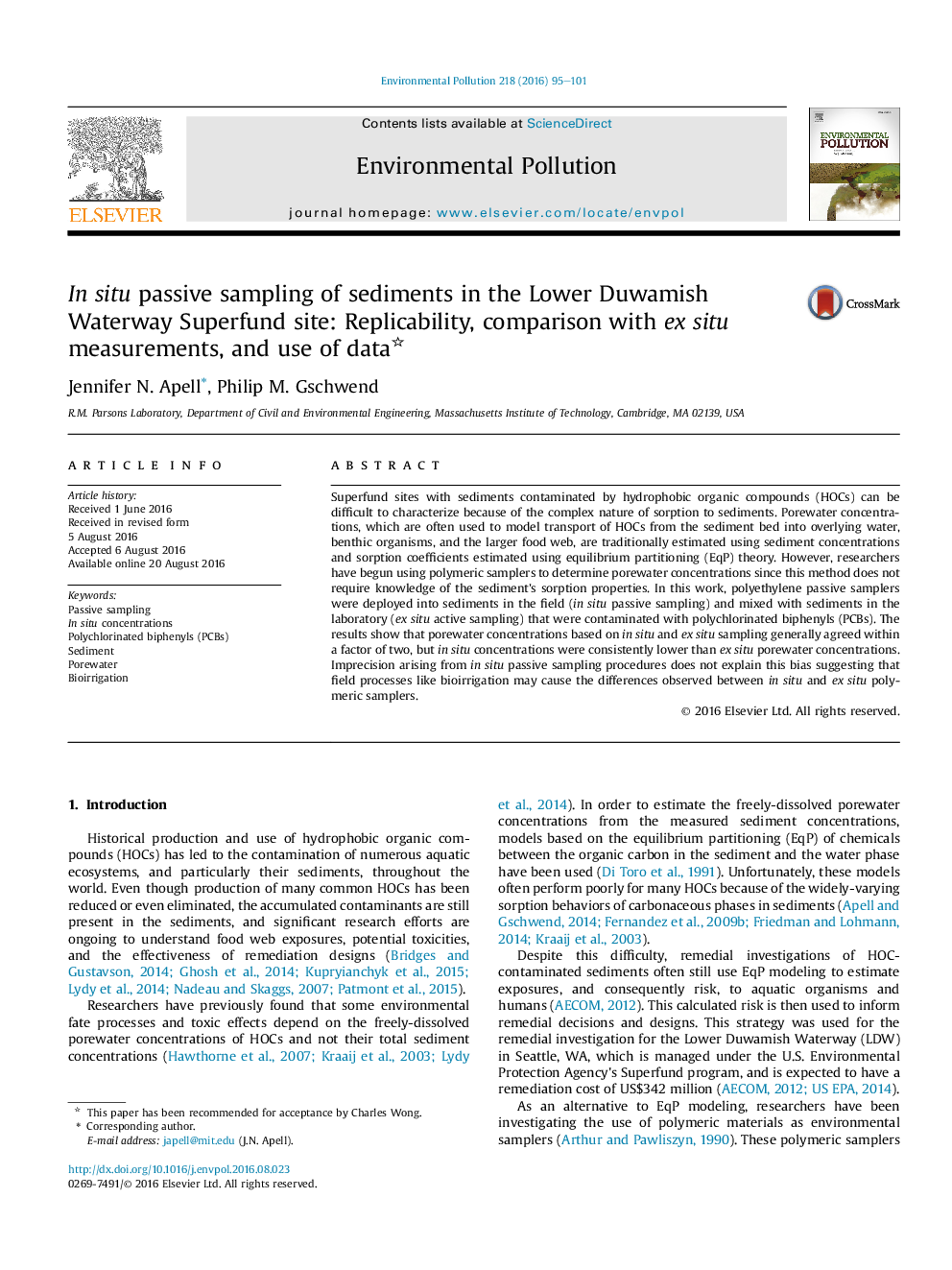| Article ID | Journal | Published Year | Pages | File Type |
|---|---|---|---|---|
| 6314537 | Environmental Pollution | 2016 | 7 Pages |
â¢In situ and ex situ polyethylene samplers were used to determine PCBs in porewater.â¢At the LDW site, in situ results were consistently lower than ex situ.â¢In situ passive samplers show good reproducibility with a calculated RSD of 27%.â¢Lower in situ porewater concentrations are likely caused by natural processes.
Superfund sites with sediments contaminated by hydrophobic organic compounds (HOCs) can be difficult to characterize because of the complex nature of sorption to sediments. Porewater concentrations, which are often used to model transport of HOCs from the sediment bed into overlying water, benthic organisms, and the larger food web, are traditionally estimated using sediment concentrations and sorption coefficients estimated using equilibrium partitioning (EqP) theory. However, researchers have begun using polymeric samplers to determine porewater concentrations since this method does not require knowledge of the sediment's sorption properties. In this work, polyethylene passive samplers were deployed into sediments in the field (in situ passive sampling) and mixed with sediments in the laboratory (ex situ active sampling) that were contaminated with polychlorinated biphenyls (PCBs). The results show that porewater concentrations based on in situ and ex situ sampling generally agreed within a factor of two, but in situ concentrations were consistently lower than ex situ porewater concentrations. Imprecision arising from in situ passive sampling procedures does not explain this bias suggesting that field processes like bioirrigation may cause the differences observed between in situ and ex situ polymeric samplers.
Graphical abstractDownload high-res image (162KB)Download full-size image
